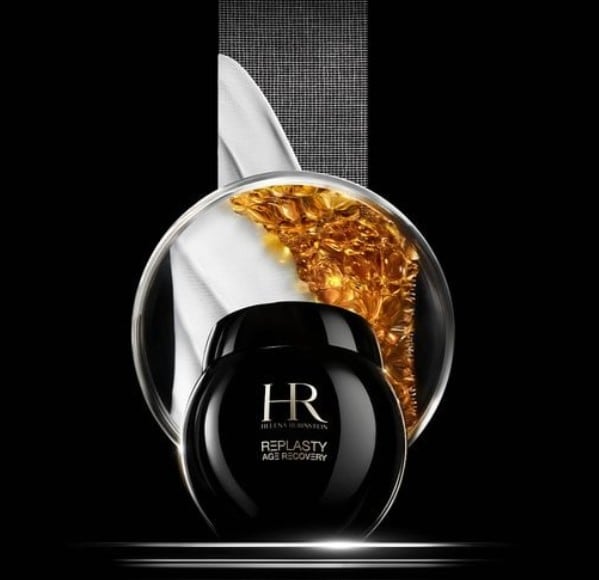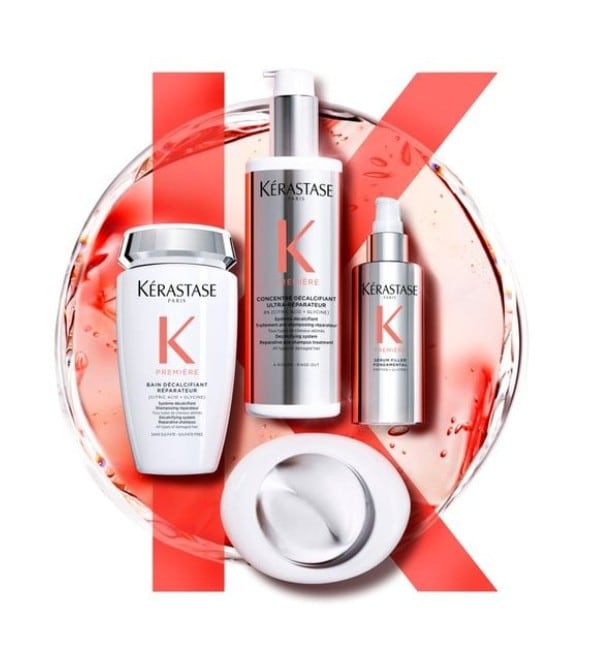Key takeaways
- Helena Rubinstein introduced members of its Avant-Garde Science Board at IFSCC 2025.
- Innovations target ozone-induced skin stress, cellular ageing, and deep skin repair.
- Hero ingredients include Crithmum maritimum, Edelweiss native cells, and Pro-Xylane™.
- Sustainability and cross-industry collaboration drive future mediluxe trends.
L’Oréal’s mediluxe skin care brand Helena Rubinstein had a noticeable presence at this year’s annual IFSCC Congress in Cannes.
The brand has showcased scientific posters at IFSCC for more than 10 years, but this was the first time it held daily symposiums to share deeper scientific insights on its latest innovations.
The heritage brand has long worked with a scientific board of experts beyond the cosmetics sphere, but recently unveiled its Helena Rubinstein Avant-Garde Science Board. This includes specialists in neuroscience, tissue repair and regeneration, aesthetic medicine and dermatology, green chemistry, cutaneous biology, cell therapy, the gut-brain-skin axis, ageing and longevity, and ingestive behaviour. As Dr Gueniche noted: “The skin is impacted by many things.”
Ozone stress: the hidden threat to skin health
The first symposium explored ozone as a new frontier in skin stress. Dr Gueniche was joined by Professor Philippe Fossati, co-director of the Belief & Decision Neuroscience team at the Institut du Cerveau and Professor of Psychiatry at the Pitié Salpêtrière Hospital.
Fossati discussed the impact of stress on the brain and body, while Gueniche explained how these effects cascade to the skin via the skin-brain axis. One key area of focus was ozone as a stressor:
“It triggers oxidative stress and inflammation, accelerating skin ageing,” she said.
Although scientists previously believed reducing pollution would lower ozone levels, climate change has increased heat and UV exposure, which in turn raises ozone levels.
“For the skin, ozone induces inflammation and oxidation,” Gueniche explained.
To counteract these effects, Helena Rubinstein developed a serum formulated with Crithmum maritimum (rock samphire) native cells, proven to protect skin, reduce oxidative and inflammatory markers, and improve imperfections.
“We know our active from samphire native cells can act against the detrimental effects of ozone on the skin,” she said.
The team validated ozone’s impact on skin, then tested the native extract using in vitro 2D culture models and reconstructed skin. After strong results, they tested on surgical skin samples, applying the full formula directly.
The six-month study, conducted during high-ozone summer months, showed the serum decreased imperfections and improved signs of ageing and skin reactivity.
Cellular reprogramming: A new era in anti-ageing
The second symposium focused on reversing ageing by targeting cell senescence. Dr Gueniche was joined by Professor Maxime Rovere and Professor Jean-Marc Lemaitre, research director at Inserm and co-director of the Institute of Regenerative Medicine & Biotherapies.
Helena Rubinstein’s two-step cellular reprogramming strategy aims to block senescent signals and stimulate regeneration. Its Prodigy CellGlow range features Edelweiss native cells, created using biotech.
Clinical and in-vitro studies confirm Edelweiss native cells and senolytics can halt cellular ageing and boost regeneration, delivering strong anti-ageing efficacy.
“This ingredient can decrease the bad effect of senescent cells and reprogramme them towards young cells,” Gueniche explained.
Lemaitre’s research demonstrated this reprogramming is possible. Helena Rubinstein also conducted mother-daughter clinical studies, showing mothers’ skin became biologically similar to their daughters’ after treatment.
“It is like your skin going back to how it was in your youth,” Gueniche said.
Pro-Xylane™ and beyond: advanced skin repair
The third symposium addressed restructuring facial skin. Dr Gueniche and Dr Maria Dalko-Cisba from L’Oréal R&I discussed Pro-Xylane™, a hero ingredient that rebuilds the epidermis and extracellular matrix.
Dr Dalko highlighted its sustainable origin and introduced a new inverse emulsion featuring the highest market concentration of Pro-Xylane™ for ageing repair and synergy with aesthetic procedures. This was also presented in a scientific poster at IFSCC.
Found in Helena Rubinstein’s RePlasty range, Pro-Xylane™ accelerates recovery for structural scars, visible scars, and fragile skin. At higher concentrations, its effects are amplified, penetrating deeper for enhanced performance.
“It works on signs of ageing that are hard to tackle, such as deep wrinkles and volume loss on cheeks,” Gueniche explained.
Future trends in mediluxe skin care
Looking ahead, Gueniche said the brand constantly seeks innovation through cross-industry collaboration. Nutraceutical supplements are under consideration, but only with robust clinical validation.
Sustainability remains a priority: “Our ingredients are always from Greentech and green chemistry,” Gueniche said. “We focus on reducing waste and practising responsible chemistry.”



